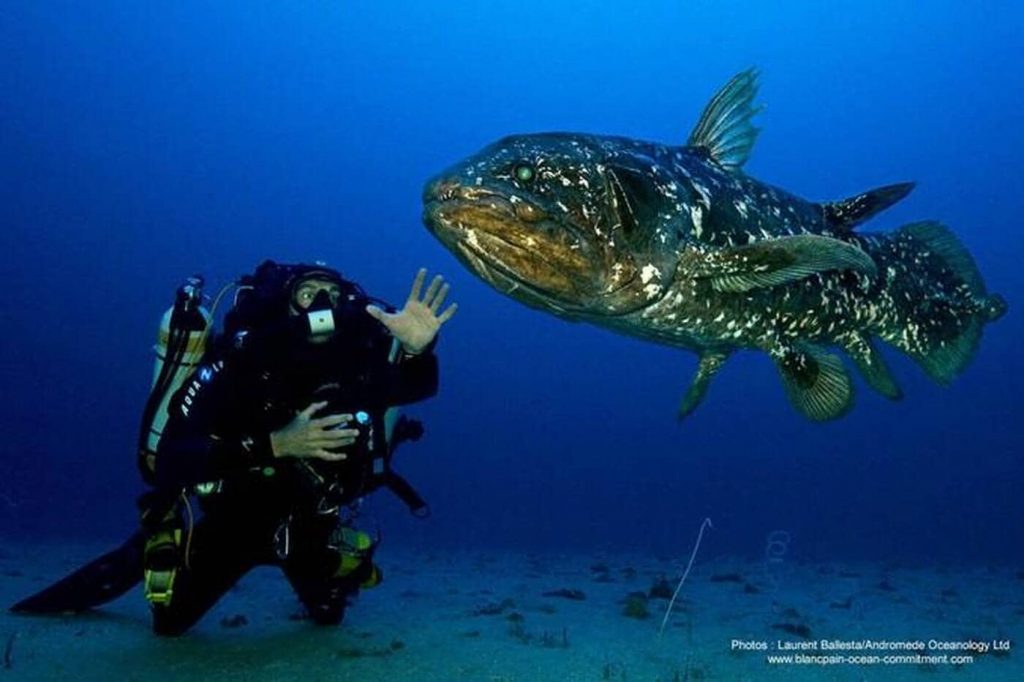
What is the secret of the coelacanth, this fossil fish of the abyss, capable of living for a hundred years? West France Evening Edition
A new study by three Ifremer researchers has shed light on coelacanth. Described as a ‘living fossil’, this fish is said to be around 100 years old, with a gestation period of five years and breeding around 55 years.
It is a legendary fish, a relic of an ancient time: coelacanthFilmed for the first time in 2010 By French diver Laurent Ballista (photo above), one of the last survivors of a dynasty that reached its peak 240 million years ago, in the time of the dinosaurs…
It is considered a “living fossil”, it can be up to 2 meters in length and 110 kg in weight, it is likely that its population is a few thousand individuals that develop especially in the waters of the Mozambique Strait, in particular the Comoros. It has been classified as an endangered species by the International Union for Conservation of Nature (IUCN).
Oceans Centenary
French researchers from Ifremer (French Research Institute for the Exploitation of the Sea) looked at this rare and mysterious fish that lives in the depths. They were able to establish that the coelacanth is one of the species with an impressive long life: “It’s the centenary of the oceans, like sharks.” Which also makes him extremely weak, they explained.
The coelacanth, whose existence was confirmed in 1938 during a fishing operation off the coast of South Africa, is found in the Indian Ocean, southeast Africa and off Indonesia. “The coelacanth does not live 22 years as previously assumed, but rather lives a horn with a gestation period of five years and a breeding period of about 55 years. So this species is more endangered than previously thought because in the face of human threats, few individuals can reach reproductive age. “
27 people saved
The largest collection of coelacanths is in France, with 27 individuals in the National Museum of Natural History. Analyzes have focused on their metrics to determine their age: As with tree growth rings, each past year leaves a visible streak under the microscope.
“In contrast to the only previous study dating back to 1977, we used what is called a polarizing microscope, which through the play of light and mirrors allows for a finer observation, Kilig Mahe, lead author of the study, explains. And we discovered another five to six small lines among those already identified in the past. “
Studying individuals, coming from the abdomen of two pregnant women, allowed researchers to draw new conclusions about the species’ reproduction rate. “All clues are consistent, Cheer up for the study’s three authors, Kellegg Mahe, Marc Herbon, and Bruno Ernandi. As one might imagine, it is indeed a slow-growing and late-breeding species, and one of the slowest growing species of marine animals. “
Future research will seek to assess the effect of water temperature on the life cycle of the species. The results will give us an idea of the effects of global warming on these endangered species. “

“Incurable web evangelist. Hipster-friendly gamer. Award-winning entrepreneur. Falls down a lot.”

